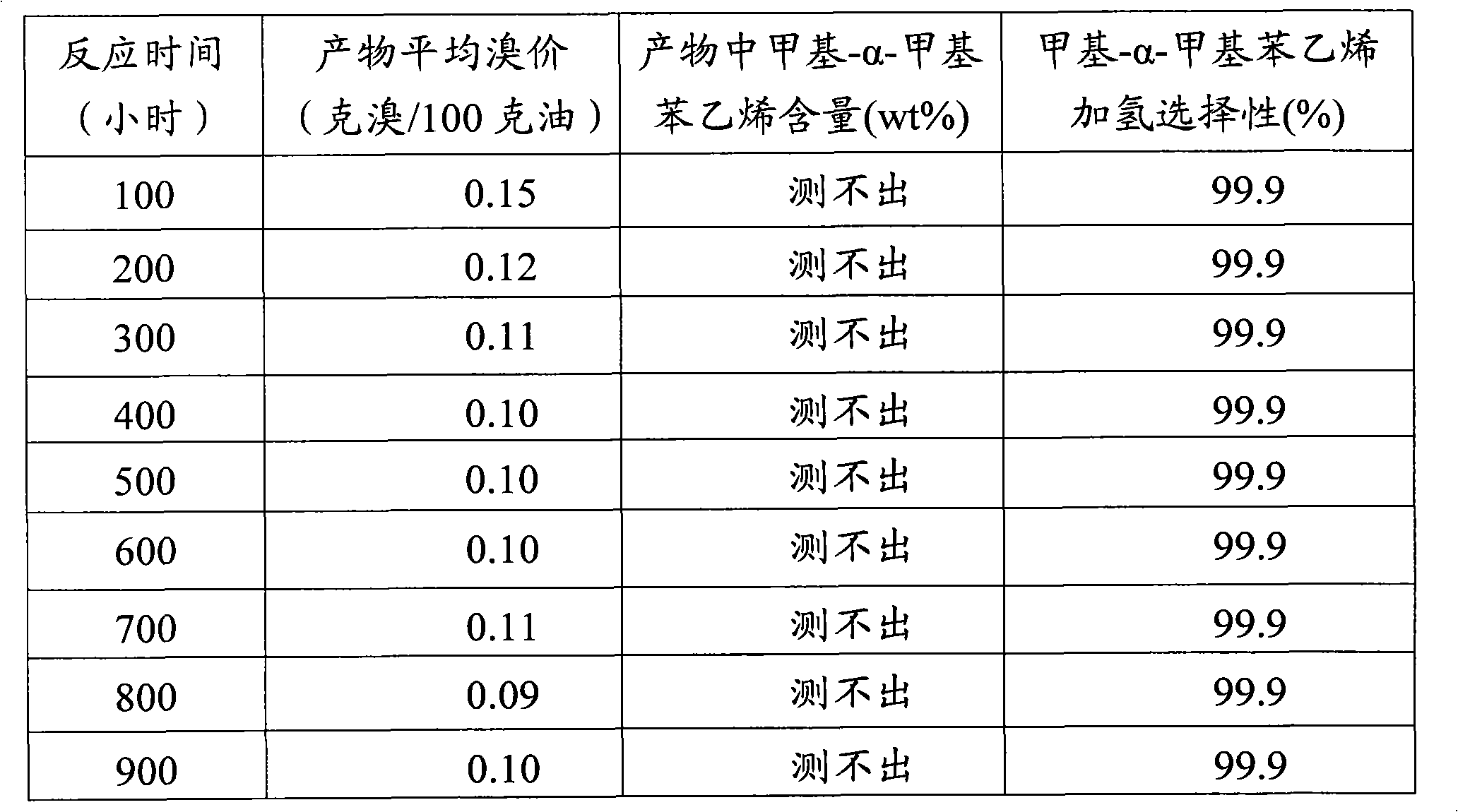Selective hydrogenation catalyst and preparation method
A technology for selective hydrogenation and catalysts, applied in hydrogenation hydrocarbon production, chemical instruments and methods, metal/metal oxide/metal hydroxide catalysts, etc., can solve the problems of low activity and selectivity, complex hydrogenation process, and operating costs Advanced problems, to achieve the effect of simple preparation method, high hydrogenation activity and selectivity, and low cost
- Summary
- Abstract
- Description
- Claims
- Application Information
AI Technical Summary
Problems solved by technology
Method used
Image
Examples
Embodiment 1
[0032] 2000 milliliters of mixed glue solution that is respectively 20.6 grams of aluminum sulfate and 103.0 grams of sodium silicate (aluminum oxide / silicon oxide weight ratio is 1 / 5) in terms of aluminum oxide and silicon oxide, at a temperature of 50 ° C and a pH value of 6.0. Under normal pressure and strong stirring conditions, add 1000 ml of nickel nitrate aqueous solution with a content of 76.4 g in terms of nickel oxide to the above mixed glue, settle for 30 minutes, filter, and use 10 times the volume of the filter cake with deionized water Wash for 40 minutes, filter, wash again, filter again, and this process is repeated four times.
[0033] The filter cake was dried at 100°C for 10 hours, calcined at 450°C for 8 hours, cooled to room temperature, ground into powder, and punched into flakes to obtain catalyst A-1 of the present invention. See Table 1 for the data.
Embodiment 2
[0035] 2000 milliliters of mixed glue solution that is respectively 24.55 grams of aluminum sulfate and 73.64 grams of sodium silicate (aluminum oxide / silicon oxide weight ratio is 1 / 3) in terms of alumina and silica, at a temperature of 60 ° C and a pH value of 7.0. Under normal pressure and strong stirring conditions, add 1000 ml of nickel nitrate aqueous solution with a content of 101.81 g in terms of nickel oxide to the above mixed glue, settle for 30 minutes, filter, and use 10 times the volume of the filter cake with deionized water Wash for 40 minutes, filter, wash again, filter again, and this process is repeated four times.
[0036] The filter cake was dried at 100° C. for 10 hours, calcined at 500° C. for 5 hours, cooled to normal temperature, ground into powder, and made into a column to obtain catalyst A-2 of the present invention. See Table 1 for the data.
Embodiment 3
[0038]2000 milliliters of mixed glue solution with a content of 28.49 grams of aluminum sulfate and 56.98 grams of sodium silicate (alumina / silicon oxide weight ratio is 1 / 2) in terms of alumina and silica, at a temperature of 70 ° C and a pH value of 6.0 , under normal pressure and strong stirring conditions, 1000 ml of nickel nitrate aqueous solution with a content of 114.53 grams in terms of nickel oxide was added to the above-mentioned alumina-silica gel solution, precipitated for 40 minutes, filtered, and removed with 20 times the volume of the filter cake. Wash with deionized water for 40 minutes, filter, wash again, and filter again, and this process is repeated four times.
[0039] The filter cake was dried at 100° C. for 10 hours, calcined at 500° C. for 5 hours, cooled to normal temperature, ground into powder, and punched into flakes to obtain catalyst A-3 of the present invention. See Table 1 for the data.
PUM
 Login to View More
Login to View More Abstract
Description
Claims
Application Information
 Login to View More
Login to View More - R&D
- Intellectual Property
- Life Sciences
- Materials
- Tech Scout
- Unparalleled Data Quality
- Higher Quality Content
- 60% Fewer Hallucinations
Browse by: Latest US Patents, China's latest patents, Technical Efficacy Thesaurus, Application Domain, Technology Topic, Popular Technical Reports.
© 2025 PatSnap. All rights reserved.Legal|Privacy policy|Modern Slavery Act Transparency Statement|Sitemap|About US| Contact US: help@patsnap.com



